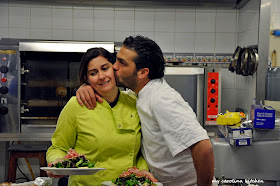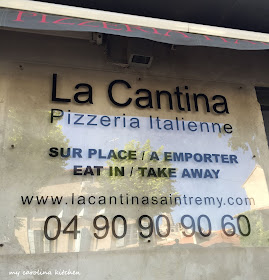We’re on the move again. I only wish it was on this road to Provence with its beautiful old plane trees that welcome you into Saint-Remy-de-Provence. Don’t I wish, but actually by the time you read this we’ll be on is an interstate that runs through Georgia, taking us to our “what-was” winter home in southwest Florida. That winter home will now become our year-around dwelling. A few weeks ago our house here in the mountains sold and we’re off on a new adventure. This is the first time in almost 30 years that we’ll not own 2 houses.
But there comes a time in your life when you realize it’s time to get off of that merry-go-around full of adventures of owning second homes and simplify and get down to one. It’s not easy to admit you might be getting too old switch homes twice a year, open and close houses for the season, keep up maintenance and bare the expenses and headaches (yes there are headaches along the way) of two houses. But we have come to that stage in our lives.
So we’re off the southwest Florida for good, or at least we’re telling ourselves that. Who knows what life will bring. Meakin is still yearning to buy a petite place in Provence. What - is he crazy? Probably. We’ve both always been a bit crazy and impulsive. This one is in Saint-Remy-de-Provence and would be perfect don't you think?
You would think we would be used to moving. After all, we’ve owned 16 houses (and lived in even more) while we climbed up career ladders. We’ve moved around a lot in our 46 years of marriage. If you count the houses we never lived in but bought with the idea of remodeling and selling, there would be even more. We were flipping houses during the 70’s in the West University and Rice area near downtown Houston before the word “flipping” was invented. But I assure you that no move is easy, no matter whether you’re accustomed to it or not. Now we have the challenge of merging 2 houses and all of their furnishing into one and trust me, that’s not an easy thing to do. We have forty-six years worth of collections and antiques to sort out and decide “does it go or does it stay?”
And worst of all, we’ll be leaving behind family in the mountains. That makes it really, really hard. But they know our ways, they know we’ll return. However, the next time it will be in a vacation rental for a month or so and not buy something again, although the temptation is always there. I can just hear one of us saying, “This house could be so nice (or cute of whatever word we use to convince the other one) if we did this or that to it.” Perhaps when we return to the mountains next year we’ll stay in this adorable cabin near Mirror Lake in Highlands, NC. It looks perfect to me. Maybe it’s for sale……just kidding.
Or maybe next fall we’ll stay in the Trail's Inn cabin, high in the tree tops in Highlands. Who knows where we’ll land.
For now we’ll be trying our best to stay away from those impulses as we jump head first into remodeling our seriously out-of-date Florida kitchen. We’re currently on a kick of converting unattractive laundry rooms into butler’s pantries with more storage as we did in the condo we sold a couple of years ago. That project will also happen at the same time as the kitchen project. But that remodeling will take place most likely next summer.
I’ll think of you when I’m knee deep unpacking the zillions of boxes, re-arranging furniture (poor Meakin), moving pictures about to find just-the-right spot and all of the other decorating joys and frustrations of a new place. The nice part about this house is that it’s in a well established neighborhood with mature trees and close to everything. After living in the mountains with only a Walmart, which is definitely better than nothing that’s for sure, I’m looking forward to “real stores.” Two of my old stomping grounds, Saks Fifth Avenue and Macys, are practically around the corner. I’m not much of a shopper, but I do like nice things. Plus Fresh Market and a wonderful little French bakery owned by a real Frenchman from Lyon are close by and Naples (SW Florida’s version of the wealthy enclave of Palm Beach, only smaller) and its fine dining and shopping, isn’t that far away, so I know we’ll be happy there.
Coincidentally My Carolina Kitchen’s 7th anniversary is this month. Seven years is a long time to blog on a continuous basis, but I’ve enjoyed every minute. I am also so pleased that Meakin and I have gotten the chance to meet quite a few of you and I look forward to the opportunity to meet even more of you.
I know the timing is a bit off, but with all the packing and unpacking that I will be doing, I must take a short break. When I return, we’ll take up where we left off and celebrate the start of My Carolina Kitchen’s 8th year.
See you soon.
Sam & Meakin

















































